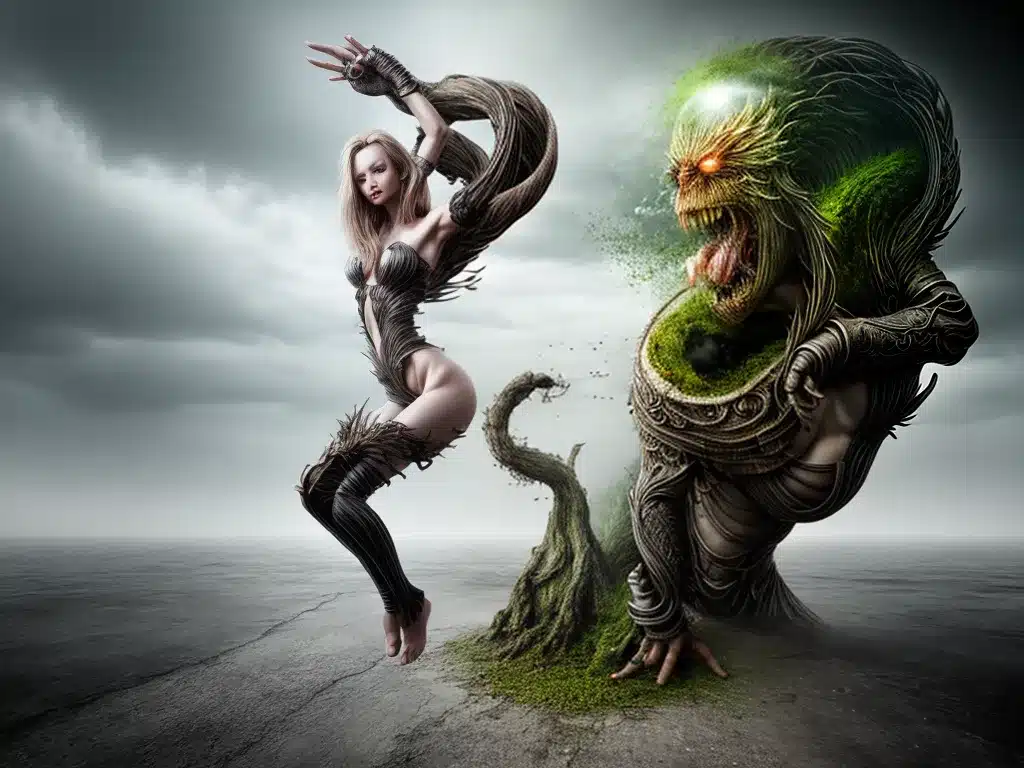Introduction
As a photo manipulator and digital artist, I find great joy in seamlessly blending elements of fantasy and reality to create visually striking composite images. The techniques used in photo manipulation give me the ability to transcend the limits of what is physically possible and bring imagination to life. In this article, I will provide an in-depth look at the creative process behind photo manipulation and the methods used to blend fantasy and reality into a cohesive, believable image.
Gathering Resources
The first step in any photo manipulation project is gathering the raw materials I will need to build my composite image. This involves finding suitable stock photos, textures, 3D assets, and other resources. I spend a great deal of time searching through stock photo sites, texture libraries, and 3D model marketplaces to find resources that can be believably integrated into a cohesive whole. Some key things I look for are:
-
High-resolution photos – Large, detailed images provide more pixels to work with for seamless compositing. Things like sharp focus, dynamic lighting, and shallow depth of field also help integrate elements.
-
Consistent quality and style – The lighting, tone, and resolution should match across all elements. Mixing drastically different styles can ruin the cohesion.
-
Flexible assets – I look for resources that can be easily modified, like 3D models that can be re-lit and textures that tile seamlessly. This expands what I can do with them.
-
Evocative mood – Resources with a strong style, color scheme, or mood help set the overall tone I want for the composite image.
With high-quality resources gathered, I can begin building up my fantasy world layer by layer.
Compositing and Blending
The real artistry of photo manipulation lies in seamlessly compositing and blending all the visual elements together into a cohesive whole. Some key techniques I use include:
-
Layer masks – Layer masks allow me to selectively blend resources, revealing some areas while hiding others based on my needs. I use masks extensively in every project.
-
Blending modes – Blending modes like screen, overlay, and multiply help integrate elements by modifying color and brightness to match the base image.
-
Color adjustments – Tweaking hue, saturation, and brightness values is essential for matching the color and tone across all composited layers.
-
Transformations – Scaling, rotating, skewing, and perspective adjustments help composite elements fit seamlessly into the scene.
-
Lighting adjustments – I often have to modify or add lighting effects to match the direction and quality of light across all elements.
-
Detail enhancements – Tools like dodging and burning bring out critical detail in composited elements, while preserving a consistent depth of field.
Patience and an eye for subtle details are critical skills in this compositing stage. I meticulously refine every layer, mask, adjustment and effect to create a truly seamless composite.
Enhancing with Digital Painting
After compositing all elements into a convincing base image, I use digital painting to enhance the photo composite and take it to the next level. Some key techniques here include:
-
Matte painting – Painting missing scenery or expanding the environment helps tie disparate elements into a cohesive world.
-
Color toning – Hand-painted color adjustments help unify the look and create mood. Things like gradient maps work great for this.
-
Lighting effects – Painting light effects like glows, rays, or reflections help sell the integration of fantasy elements.
-
Textures and details – Hand-painted textures add fine details that reinforce the desired aesthetic.
-
Special effects – Painting subtle energy, smoke, particles or other effects brings life to the scene.
With a balanced touch, digital painting can enhance a composite without overpowering it. These hand-painted effects breathe life into a scene, imbuing it with a sense of tangibility and magic.
Conveying an Imaginative Narrative
A critical step in blending fantasy and reality is conveying a sense of narrative – using visual cues to imply a story behind the image. I incorporate narrative elements like:
-
Evocative characters – Expressive characters, poses, and gazes lead the viewer’s eye through the image and raise questions.
-
Environmental storytelling – Placing composited elements together in an intentional way suggests relationships and events.
-
Lighting with purpose – Lighting directs focus and sets mood, driving the intended tone and atmosphere.
-
Thoughtful framing – Compositional techniques emphasize important subjects and lead the viewer into the image.
Layering these visual cues creates an implicit narrative, allowing viewers to project their own imagined stories onto the image. This sense of intuitive vision lets fantasy seamlessly permeate the composite on an emotional level.
Conclusion
Blending fantasy and reality in photo manipulation requires knowledge, creativity, and technical skill. But when done right, these digital arts can produce beautiful, expressive images that suspend disbelief and ignite the imagination. The ability to seamlessly shape dreams in pixels is endlessly rewarding. I look forward to pushing my skills even further, realizing even more fantastic visions in the future. The possibilities are limited only by the boundaries of imagination.













